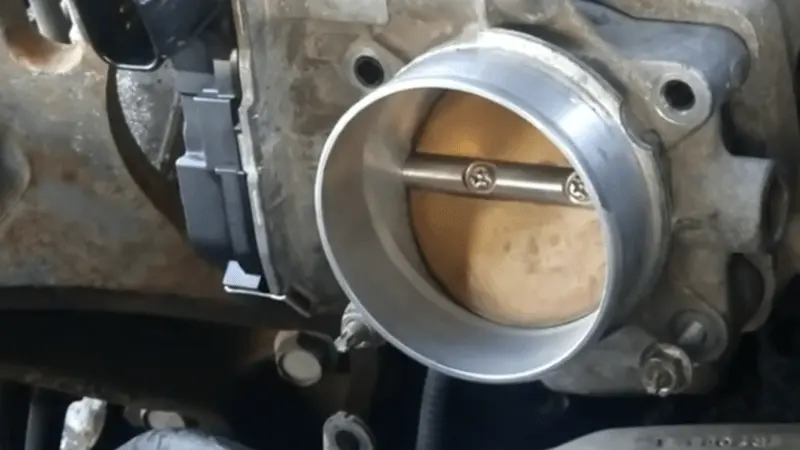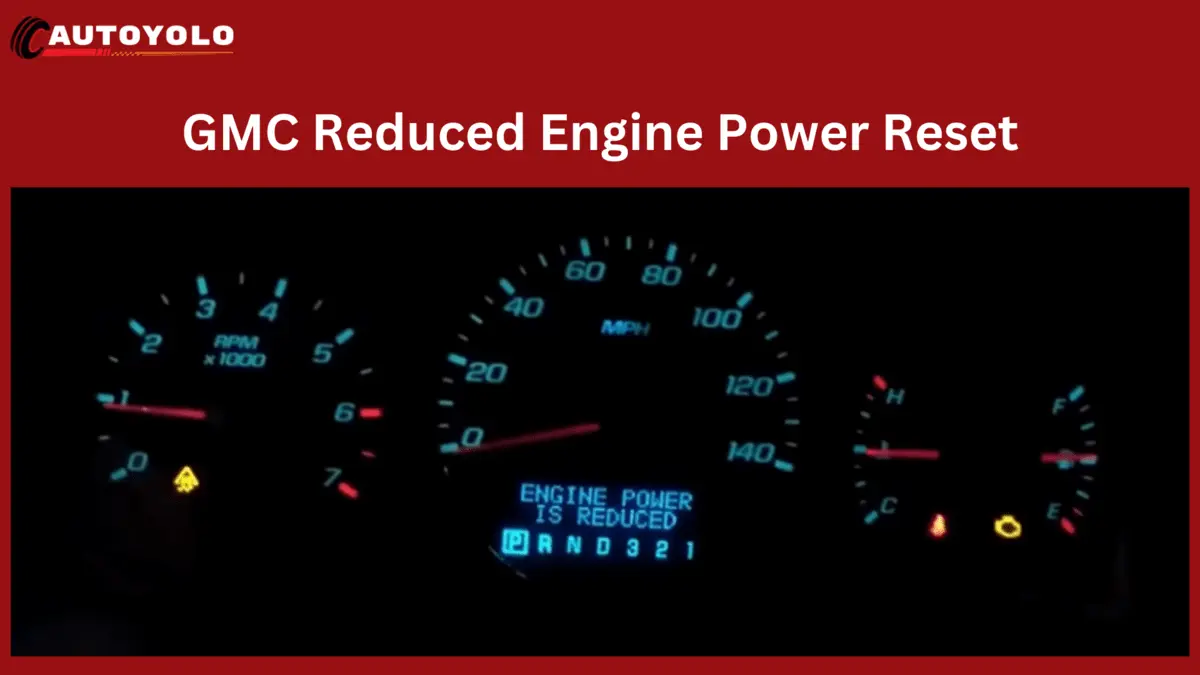Encountering the dreaded “GMC Reduced Engine Power” mode can be a frustrating experience for car owners. However, understanding how to perform a reset can save both time and money. In this guide, we will delve into the intricacies of resetting reduced engine power in GMC vehicles. Whether you’re dealing with a temporary glitch or a persistent issue, these steps will empower you to take control of your car’s performance and get back on the road with confidence.
What Is Reduced Engine Power On GMC?
Reduced engine power on a GMC is a safety feature designed to protect the engine from potential damage. When the car’s computer detects a significant error or issue that could harm the engine, it activates a “safe mode” by lowering engine power. This is indicated by a warning light on the dashboard, often displaying messages like “low engine power” or a “check engine” sign with a downward arrow.
The system, colloquially known as “limp mode,” can result in drastic effects, such as aggressive braking that limits speed to a crawl. In extreme cases, the engine may shut down completely, prompting the driver to pull over and turn off the engine. Additionally, non-essential electrical features like the music system and interior lighting may be disabled to conserve power.
RELETED: Understanding and Resolving GMC Speed Limit Display Not Working Issues
What May Be Causing GMC’S Engine Power To Decrease?
1. Issues with Sensors:
When experiencing reduced engine power in a GMC, one of the primary culprits can be faulty sensors. The mass airflow sensor and throttle position sensor play crucial roles in monitoring air and fuel flow, as well as the throttle position. If these sensors malfunction or provide inaccurate data, it can lead to a decrease in engine power and overall performance. Regular sensor maintenance and prompt replacement when issues arise, can help prevent power loss.
2. Throttle Body Defect:

A malfunctioning throttle body is another potential cause of reduced engine power. The throttle body regulates airflow into the engine, and any breakdown in its functionality can result in a reduction of airflow, subsequently decreasing engine power. Regular inspection of the throttle body and addressing issues promptly can contribute to maintaining optimal engine performance.
3. Electric Wiring Problems:
Unexpectedly, electrical wiring issues can trigger the low engine power mode in GMC vehicles. The engine relies on various electrical components, and if the wiring system fails, critical parts may malfunction. The vehicle’s computer system activates the reduced engine power mode as a safety feature in response to malfunctioning sensors or damaged wire harnesses. Regular checks of the electrical system and prompt repairs can prevent such issues.
4. Troubleshooting Fuel Systems:
Issues within the fuel system can significantly impact engine power. A common culprit is a dirty or blocked gasoline filter. Over time, debris and contaminants in the gasoline can clog the fuel filter, restricting fuel flow and diminishing engine power. Regular maintenance, including fuel filter replacement, is essential to ensure proper fuel system function and prevent power loss.
5. Exhaust System Problems:
The exhaust system plays a vital role in a vehicle’s performance, and problems with this component can lead to reduced engine power in GMC cars. A frequently encountered issue is a clogged catalytic converter. As dirt and grime accumulate, the converter hinders exhaust gas flow, making it challenging for the engine to breathe. This results in decreased power production and sluggish acceleration. Regular inspection and maintenance of the exhaust system can prevent such issues.
6. Concerns Regarding the ECM (Engine Control Module):
Malfunctions in the electronic control module (ECM) often contribute to reduced engine power in GMC vehicles. The ECM, responsible for coordinating various engine functions, may send incorrect signals, leading to decreased power and performance. Symptoms of ECM issues include unexpected stalling, difficulty maintaining speed, and slow acceleration. Prompt diagnosis and repair of ECM problems are crucial for ensuring a safe and enjoyable driving experience.
3 Steps To GMC Reduced Engine Power Reset
Experiencing the frustration of a GMC in reduced engine power mode can be daunting, but there are three steps you can take to reset this mode on your own. These approaches are user-friendly and eliminate the need for a technician or costly repairs.
Step 1: Perform a Fast Reset
The quickest way to attempt a reset is by turning off the engine and restarting it after a few minutes. This simple procedure may restore normal operation to your GMC and clear the reduced engine power mode. If the issue persists, a more thorough option is to disconnect the battery connections. After about fifteen minutes of inactivity, reconnect the battery. This process serves as a reboot for the vehicle’s computer system and may resolve issues causing the reduced engine power mode.
It’s important to note that this step is more of a temporary solution, and if the problem is persistent, further investigation and troubleshooting are recommended.
Step 2: Manual Diagnosis and Component Inspection
When the “reduced engine power” warning light appears, it’s essential to address potential issues with engine components. Faulty parts could be contributing to the problem. Using an OBD-II scanner and conducting a manual examination are reliable methods to identify and rectify defective components.
Here are some key components to inspect:
- Blown Fuses: Verify and replace any blown fuses, as they could be causing electrical issues, leading to reduced engine power.
- Oil Change: Regularly change the oil, typically recommended around 7,500 miles, to ensure proper lubrication and prevent engine issues.
- Spark Plugs: Replace spark plugs at recommended intervals, around 30,000 miles, to maintain efficient combustion and engine performance.
- Transmission Fluid: Swap out the transmission fluid approximately every 45,000 miles to prevent transmission-related problems.
- Air Filter: Evaluate and maintain the air filter to ensure optimal air intake for combustion.
- Catalytic Converter: Inspect and address any problems with the catalytic converter, a common cause of reduced engine power.
- Oxygen and MAF Sensors: Verify each oxygen and mass airflow (MAF) sensor separately for proper functioning.
- Engine Belts, Connections, Circuits, and Ground Connections: Evaluate these components for wear, damage, or loose connections.
If any issues are detected during the inspection, it’s crucial to address and replace the problematic components promptly.
Step 3: Employing an On-Board-II Reader
For a more advanced and precise diagnosis, an onboard diagnostics (OBD-II) scanner can be a valuable tool. This scanner, whether purchased or rented, allows you to connect to the OBD-II port in your car and retrieve diagnostic trouble codes (DTCs). These codes, such as P0120 or P2135, provide insights into specific issues affecting your vehicle’s performance.
Upon obtaining the DTCs, a quick online search for the corresponding codes will yield detailed information about the problems. An OBD-II scanner accelerates the identification of issues and provides accessible solutions, making it a worthwhile investment for DIY troubleshooting.
Cost to Fix GMC Reduced Engine Power
The cost to fix GMC Reduced Engine Power varies depending on the model and the underlying issue. Generally, repairs can range from $50 to $550. However, if the diminished engine power results from a severe problem, the price for resetting can escalate significantly. For example, resolving issues related to a defective catalytic converter may exceed $1500. It’s crucial to diagnose the specific problem through proper inspection and, if needed, consult with a professional to determine the most accurate estimate for restoring your GMC’s engine power to optimal levels.
FAQs
1. Can I drive my GMC in Reduced Engine Power mode?
It’s not advisable. While you can drive slowly if necessary, the mode limits performance poses potential dangers, and may lead to costly engine damage.
2. How do I perform a fast reset for Reduced Engine Power?
Please turn off the engine and restart it after a few minutes. Alternatively, disconnect the battery for about fifteen minutes and reconnect to reboot the vehicle’s computer system.
3. What components should I manually inspect for issues?
Check for blown fuses, change oil at recommended intervals, replace spark plugs, swap transmission fluid, evaluate the air filter, inspect the catalytic converter, and verify oxygen and MAF sensors.
4. Why use an OBD-II scanner for troubleshooting?
An OBD-II scanner provides detailed trouble codes (DTCs) that pinpoint specific issues, aiding in quick and precise diagnostics. It’s a valuable tool for DIY troubleshooting.
5. Is it safe to drive to a garage in Reduced Engine Power mode?
It’s not recommended. Driving poses risks of further damage. Instead, pull over to a safe location and arrange for a tow truck to transport your car to a garage.
Is it possible to drive with GMC Reduced Engine Power?
Driving with GMC Reduced Engine Power is not advisable, as your car will operate at low speeds with limited performance, making it potentially dangerous. In this mode, the risk of causing severe damage to the engine and electrical system is heightened, leading to potentially costly repairs. While you may drive slowly if necessary, it’s crucial to prioritize safety and minimize driving time. Instead of attempting to reach a destination, especially in busy areas, it’s recommended to pull over to a safe location and arrange for a tow truck to transport your car to a garage. Driving in reduced engine power mode poses risks and should be avoided to prevent further damage.

Eric L. Friedman is a car expert who has worked on Chevy and GMC trucks for over 10 years. He started AutoYolo to help people fix their own cars. On the blog, he shares easy tips, step-by-step guides, and repair advice to make car problems less stressful and more affordable.

